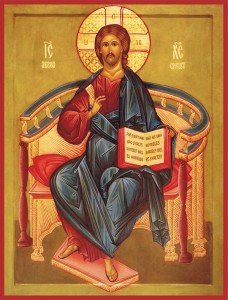 In this article I have been providing information about the Gospel of Mark, considered to be the oldest of the four Gospels and the source of much of the Gospels of Matthew and Luke. When we read Mark’s Gospel, we need to be aware that Genesis was always in the background. Mark was always thinking of God as the Creator, whose primary concern is to create, sustain and restore life. His Gospel is filled with reminders of “the beginning.” It is structured around the idea that God desires to lead us back to the original Garden. Indeed of particular importance to Mark is God’s creation of human beings in God’s image. Mark presents Jesus as a NEW ADAM (son of man) and as image of the divinity (son of God). I has also hoping that these comments on the Gospel of Mark might inspire some to read the Gospel during the Great Fast. It could be a very good exercise during the Fast and, as you read the Gospel, you could also read this article.
In this article I have been providing information about the Gospel of Mark, considered to be the oldest of the four Gospels and the source of much of the Gospels of Matthew and Luke. When we read Mark’s Gospel, we need to be aware that Genesis was always in the background. Mark was always thinking of God as the Creator, whose primary concern is to create, sustain and restore life. His Gospel is filled with reminders of “the beginning.” It is structured around the idea that God desires to lead us back to the original Garden. Indeed of particular importance to Mark is God’s creation of human beings in God’s image. Mark presents Jesus as a NEW ADAM (son of man) and as image of the divinity (son of God). I has also hoping that these comments on the Gospel of Mark might inspire some to read the Gospel during the Great Fast. It could be a very good exercise during the Fast and, as you read the Gospel, you could also read this article.
Mark also connects Jesus to the central prophets of Jewish tradition – Moses and Elijah. In terms of narrative structure, Jesus’ relationship to John the Baptist is patterned after the Elijah-Elisha cycle in the two books of Kings, a cycle which, in its own way, echoes the biblical narrative from Genesis to Kings. The miracles that Mark shows Jesus performing have their connections to Elijah’s raising up a young man from death (1 Kings 17:17-24) , to Elisha’s multiplication of loaves (2 Kings 4:42-44) and to his cleansing of a leper (2 Kings 5:1-14). When Mark shows Jesus in his state of transfigured glory, he shows him in conversation with Moses, the giver of God’s word and with Elijah, the prophet who, according to biblical legend, never died but was taken up to heaven.
Mark also places Jesus in the tradition of the prophets seeking the reform of the Temple. By means of interweaving quotations from Scripture, Mark links Jesus to the warnings of Jeremiah and the vision of Isaiah. He shows Jesus warning that the Temple would be destroyed unless the Temple authorities gave up their idolatrous connections with foreign power and wealth. At the same time, Mark shows Jesus sharing Isaiah’s vision of a sacred space where all peoples will join together in worshipping the one God.
We must always remember that Mark, unlike Luke, was a Jew and was deeply immersed in Judaism and that Jesus was the Jewish Messiah.
